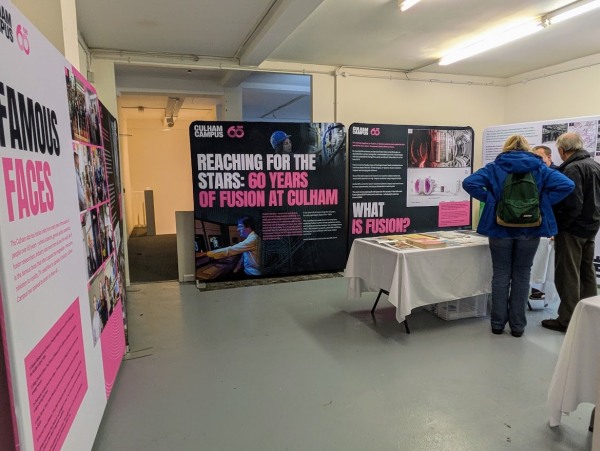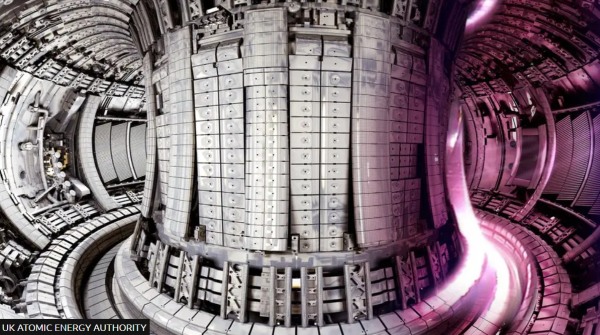
During Heritage Open Weekend there was an exhibition upstairs in Unit 25 Bury Street about 60 years of fusion research at Culham, near Abingdon. This is my simplified understanding …
In the early 1960s the UK Atomic Energy Authority put all its fusion research on the site at Culham. It opened in 1965 with scientists trying out different ideas to make fusion work.
Nuclear fusion is the process that powers the Sun. It works by heating and forcing together atoms so they fuse into a heavier atoms, releasing energy. To make fusion happen on Earth, the fuel must be heated to extremely high temperatures so that it becomes a state of matter called plasma. Plasma is like a gas whose atoms have been split into charged particles. Because plasma is charged, it can be held and shaped by magnetic fields which keep it away from walls long enough for fusion to happen.
In the 1970s, experiments in the USSR showed that a doughnut-shaped magnetic machine called a tokamak could hold very hot plasma better than other designs. Culham scientists built equipment to test and check these results.
In the 1980s, Culham was chosen for Europe’s biggest fusion experiment: the Joint European Torus (JET). Work started in 1978 and the first plasma was formed in 1983.

In the 1990s, Culham scientists developed a more compact form of tokamak, called the spherical tokamak. Their test device, START, ran from 1991 to 1998, and showed that this shape gave better performance for a smaller size.
In the 2000s, Culham scientists built MAST (Mega Amp Spherical Tokamak) – a bigger spherical tokamak machine. That machine, and its later upgrade were used to find out how to handle extreme heat and control plasma.
In the 2010s–2020s, JET broke records. In 2022 it produced 59 megajoules of fusion energy in 5 seconds using a fuel mix of deuterium-tritium (two types of hydrogen). They fuse to form helium and release energy.
JET ended experimentation in December 2023 and is now being decommissioned.
Meanwhile the UK is planning its first prototype fusion power station, STEP (Spherical Tokamak for Energy Production), to be built at West Burton, Nottinghamshire, a former coal-fired power station. Meanwhile, ITER, a European tokamak reactor is being built in France. Both are based on the research done and still being done at Culham.
Thank you Backstreeter for your full excellent coverage of the Heritage Weekend.
Thank you too to all the volunteers who made it such a great success. So much hard work must have gone into it all behind the scenes!
Backstreeter’s summary is good, but in fact there is virtually no chance of fusion energy ever becoming a reality. I saw a letter in Private Eye recently which dismissed fusion energy on the basis that there is no way of pre-testing radiation damage effects and tritium breeding on the scale required. All very technical.
I guess it would be like trying to build a suspension bridge without knowing the properties of the materials used.
It’s good to be sceptical about what you read but I doubt that many would consider Private Eye to be the go to journal for Nuclear Physics.
It was not long ago that manned flight was considered improbable.
Spike – you may be as sceptical of Private Eye as others are of fusion, but much the same points made in the PE letter have been made in contributions to the Institute of Physics magazine, Physics World.
Famously, fusion energy has been predicted to be 20 years away for the last 70 years.